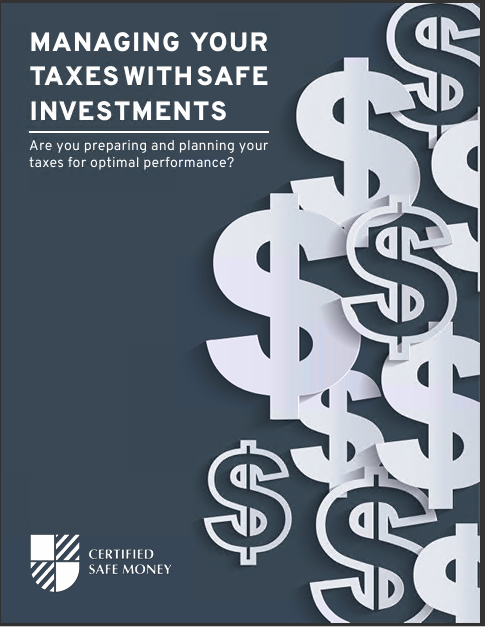Key Takeaways:
- Roth IRA annuities provide a unique opportunity for tax-free growth and income in retirement, offering significant advantages over traditional retirement accounts.
- Understanding the benefits and strategies for incorporating Roth IRA annuities into your retirement plan can help maximize your financial security and peace of mind.
Retire the Smart Way: Tax-Free Income with Roth IRA Annuities
Planning for retirement involves making strategic decisions to ensure a stable and comfortable future. One of the most effective tools for achieving this goal is the Roth IRA annuity. Combining the benefits of a Roth IRA with the predictable income stream of an annuity, this financial product offers tax-free growth and income, making it a powerful option for retirees. This article looks into the advantages of Roth IRA annuities and provides insights on how to incorporate them into your retirement plan.
Understanding Roth IRA Annuities
A Roth IRA (Individual Retirement Account) is a retirement savings account that allows for tax-free growth and withdrawals, provided certain conditions are met. Contributions to a Roth IRA are made with after-tax dollars, meaning you do not receive a tax deduction for contributions. However, the earnings grow tax-free, and qualified withdrawals in retirement are also tax-free.
An annuity, on the other hand, is a financial product that provides a steady income stream, usually for retirees. Annuities can be structured in various ways, including fixed, variable, and indexed, each with its own set of benefits and risks.
A Roth IRA annuity combines these two products, allowing the tax-free benefits of a Roth IRA to be applied to the steady income stream of an annuity. This combination can provide significant tax advantages and financial security in retirement.
Benefits of Roth IRA Annuities
Tax-Free Growth
One of the most significant benefits of a Roth IRA annuity is tax-free growth. Since contributions are made with after-tax dollars, the earnings on those contributions grow without being subject to annual taxes. This can lead to substantial growth over time, particularly if the investments within the annuity perform well.
Tax-Free Withdrawals
In addition to tax-free growth, Roth IRA annuities also offer tax-free withdrawals. As long as you meet the requirements for a qualified distribution (being 59½ years old and having the Roth IRA for at least five years), you can withdraw both contributions and earnings without paying taxes. This can be a major advantage over traditional IRAs and 401(k)s, which are taxed upon withdrawal.
No Required Minimum Distributions (RMDs)
Unlike traditional IRAs and 401(k)s, Roth IRAs do not require minimum distributions during the account holder’s lifetime. This allows your investment to continue growing tax-free for as long as you choose, providing greater flexibility and control over your retirement funds.
Predictable Income Stream
Annuities are designed to provide a steady income stream, which can be particularly beneficial in retirement. By combining an annuity with a Roth IRA, you can ensure that this income is tax-free, providing greater financial stability and peace of mind.
Estate Planning Benefits
Roth IRA annuities can also be a valuable tool for estate planning. Since Roth IRAs do not require RMDs, the account can continue to grow tax-free even after the account holder’s death. Beneficiaries can then inherit the Roth IRA annuity and receive tax-free income, potentially over their own lifetimes.
Types of Roth IRA Annuities
Fixed Roth IRA Annuities
Fixed Roth IRA annuities provide a guaranteed interest rate and predictable payments. This type of annuity is ideal for conservative investors who prioritize stability and a steady income stream. The interest earned within the annuity grows tax-free, and the payments you receive in retirement are also tax-free.
Variable Roth IRA Annuities
Variable Roth IRA annuities allow you to invest in a selection of sub-accounts, similar to mutual funds. The payments from these annuities are based on the performance of the chosen investments, offering the potential for higher returns but also carrying more risk. The tax-free growth and withdrawals of a Roth IRA apply, making this option attractive for those with a higher risk tolerance seeking growth potential.
Indexed Roth IRA Annuities
Indexed Roth IRA annuities offer a combination of features from fixed and variable annuities. They provide a minimum guaranteed interest rate, with additional earnings linked to a specific market index. This type of annuity can offer growth potential with some level of protection against market downturns, all within the tax-free framework of a Roth IRA.
How to Incorporate Roth IRA Annuities into Your Retirement Plan
Assess Your Financial Goals
Before incorporating a Roth IRA annuity into your retirement plan, it’s essential to assess your financial goals. Consider factors such as your desired retirement lifestyle, income needs, risk tolerance, and overall retirement savings strategy. Understanding your financial objectives will help you determine the most suitable type of Roth IRA annuity for your needs.
Evaluate Your Risk Tolerance
Different types of Roth IRA annuities come with varying levels of risk. Fixed annuities offer stability and predictability, making them suitable for conservative investors. Variable annuities provide growth potential but come with market risk, making them more appropriate for those with a higher risk tolerance. Indexed annuities offer a balance between growth potential and protection. Evaluate your risk tolerance to select the type of annuity that aligns with your comfort level.
Maximize Contributions
To fully leverage the benefits of a Roth IRA annuity, maximize your contributions to your Roth IRA each year. The contribution limits for 2023 are $6,500 for individuals under 50 and $7,500 for those 50 and older. By contributing the maximum amount, you can take full advantage of the tax-free growth and income potential of a Roth IRA annuity.
Consider Roth Conversions
If you have a traditional IRA or 401(k), consider converting these accounts to a Roth IRA. Although you will pay taxes on the amount converted, future growth and withdrawals from the Roth IRA will be tax-free. This strategy can be particularly beneficial if you expect to be in a higher tax bracket in the future.
Consult a Financial Advisor
Working with a financial advisor can help you navigate the complexities of Roth IRA annuities and retirement planning. An advisor can provide personalized recommendations based on your financial situation, goals, and risk tolerance. They can also help you understand the tax implications of different strategies and ensure that you are making the most of your retirement savings.
Strategies for Maximizing Tax-Free Income with Roth IRA Annuities
Diversify Your Investments
Diversifying your investments within a Roth IRA annuity can help manage risk and optimize returns. Consider allocating your contributions among various investment options, such as stocks, bonds, and mutual funds, to balance growth potential and stability.
Implement a Withdrawal Strategy
To maximize the tax-free income from your Roth IRA annuity, implement a strategic withdrawal plan. Consider factors such as your overall retirement income, tax bracket, and financial needs when deciding when and how much to withdraw. By carefully planning your withdrawals, you can minimize taxes and ensure a steady income stream throughout retirement.
Take Advantage of Spousal Roth IRA Annuities
If you are married, consider establishing a spousal Roth IRA annuity. This allows both you and your spouse to contribute to separate Roth IRAs, doubling your contribution limits and maximizing your tax-free growth and income potential. Additionally, spousal Roth IRA annuities can provide financial security for your spouse in the event of your death.
Plan for Long-Term Care
Long-term care can be a significant expense in retirement. Consider incorporating long-term care insurance or a long-term care rider within your Roth IRA annuity to protect your assets and ensure that you have the resources to cover these costs. This strategy can help preserve your retirement savings and provide peace of mind.
Monitor and Adjust Your Plan
Regularly review and adjust your retirement plan to ensure that it remains aligned with your goals and financial situation. Market conditions, tax laws, and personal circumstances can change over time, necessitating adjustments to your investment and withdrawal strategies. Staying proactive and flexible can help you make the most of your Roth IRA annuity and achieve financial security in retirement.
Achieving Financial Security with Roth IRA Annuities
Incorporating a Roth IRA annuity into your retirement plan can provide significant tax advantages and financial stability. By understanding the benefits, types, and strategies for maximizing the potential of Roth IRA annuities, you can make informed decisions that enhance your retirement income and overall financial well-being. Assess your financial goals, evaluate your risk tolerance, and consult a financial advisor to create a retirement plan that leverages the power of Roth IRA annuities for a secure and comfortable future.
Contact Information:
Email: biancachavez@bedrockfs.com
Phone: 6029307914














